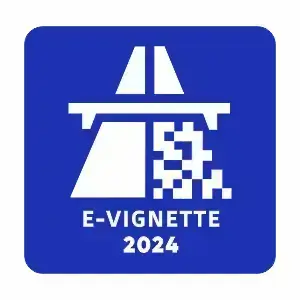In 2004, it was estimated at 2.2 billion dollars, and now it will be at least 4.19 billion, although it will only be built up to Marosvásárhely, not Brasov. Exactly 20 years ago, on June 16, 2004, in the presence of Prime Minister Adrian Năstase and Deputy Prime Minister Béla Markó, work on the Transylvanian highway began at Tordaszentlászló, which became the North Transylvanian Highway. Today, out of nearly 282 kilometers, 130 kilometers can be driven continuously on the highway between Marosvásárhely and Magyarnádas. Regarding the section leading to Cluj-Napoca, it has often been said that it would be possible to travel on the highway all the way if Cluj-Napoca had a highway ring road. In the fall of 2023, the 13.55-kilometer section between Berettyószéplak and Szilágynagyfalu was handed over, but it is not connected to the existing road network. In 2003, the Bucharest government and the American Bechtel signed a contract to build the 415-kilometer highway to Brasov, worth 2.2 billion dollars, and the delivery deadline was 2013.
The investment did not go as planned: the works progressed slowly and the contractor demanded more and more money. By 2013, not the handover, but the termination of the contract, and Bechtel left the country with $1.5 billion, leaving behind 52 km of completed and 64 km of abandoned highway. It was possible to travel between Gyalu and Aranyosgyéres, which was delivered in two installments in 2009 and 2010. After the termination of the contract, it was decided that the track would not continue from Marosvásárhely to Brasó. Since then, the Aranyosgyéres-Maroskece, Maroskece-Radnót, Radnót-Marosugra, Marosugra-Nyárádtő, Nyárádtő-Marosvásárhely, Berettyószéplak-Szilágynagyfalu and Bors-Bihar sections have been delivered at a total cost of 1.9 billion lei, i.e. 413 million dollars. This means that 126 km of highway were built for 1.9 billion dollars, while according to the original plans, 415 km would have cost 2.2 billion. The last 20 years have been about bad luck for the client and contractors, unsuccessful public procurement procedures and court cases. The Aranyosgyéres-Maroskece section was completed by the Strabag-Geiger consortium eight months ahead of schedule. Six sections are still to be completed, their total length exceeds 138 kilometers.
Three of these sections are under construction, the contractor is UMB Spedition. Two viaducts must be built between Magyarnádas and Magyarzsombor, which will cost 1.39 billion lei. The sections between Bihar-Bisztraterebes and Bisztraterebes-Berettyószéplak are under planning. For the section started by Bechtel in 2004, CNAIR finally found the contractor after three unsuccessful tenders, Construcții Erbașu undertook the design and construction of the 26.35 km for 884 million lei. Erbașu must also complete a 1.6 km long valley bridge. The contractor of the 28.55 km long Bisztraterebes-Bihar section became the association led by Precon, the 758 million lei contract was signed in April this year, but due to an ongoing lawsuit, they have to start work only in May 2025. From a technical point of view, the section between Vaskapu and Szilágynagyfalu is the biggest challenge, a 2.89 km long tunnel has to be built here.
The 7.5 billion lei contract will be signed soon, and 78 months are available for construction, which means that it will be possible to travel on the highway from Marosvásárhely to the Hungarian border at the end of 2030 at the earliest. The value of the remaining works is 10.532 billion lei, which is nearly 2.29 billion dollars. Thus, the entire highway in Northern Transylvania will cost at least 4.19 billion dollars, and the delivery of the last section is expected more than 25 years after the first hoe was cut.



 Deutsch (DE)
Deutsch (DE)
 Greek (GR)
Greek (GR)
 Italiano (IT)
Italiano (IT)
 Magyar (HU)
Magyar (HU)
 Polski (PL)
Polski (PL)
 Română (RO)
Română (RO)
 Slovensky (SK)
Slovensky (SK)
 Slovenščina (SL)
Slovenščina (SL)
 Türkçe (TR)
Türkçe (TR)
 Česká (CZ)
Česká (CZ)








